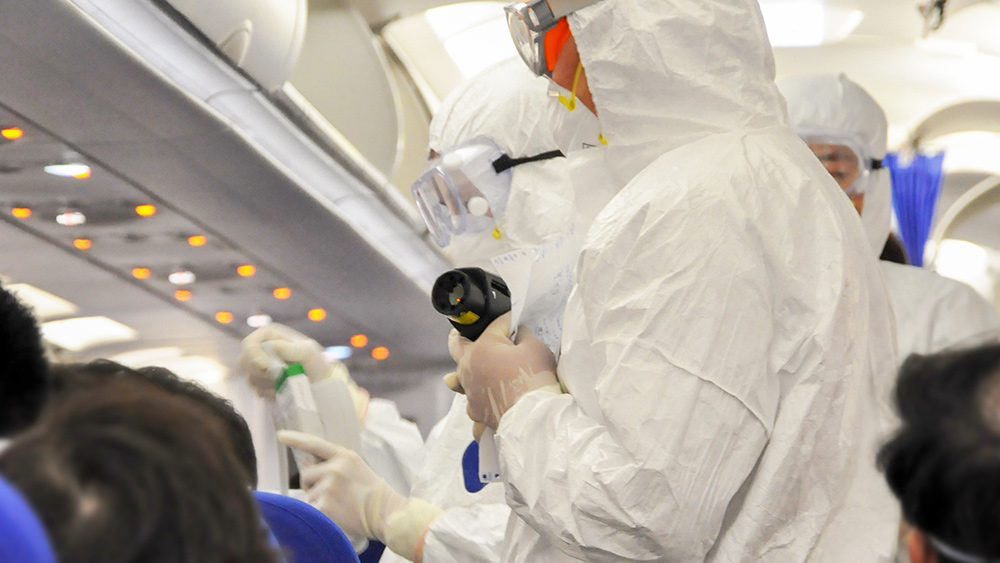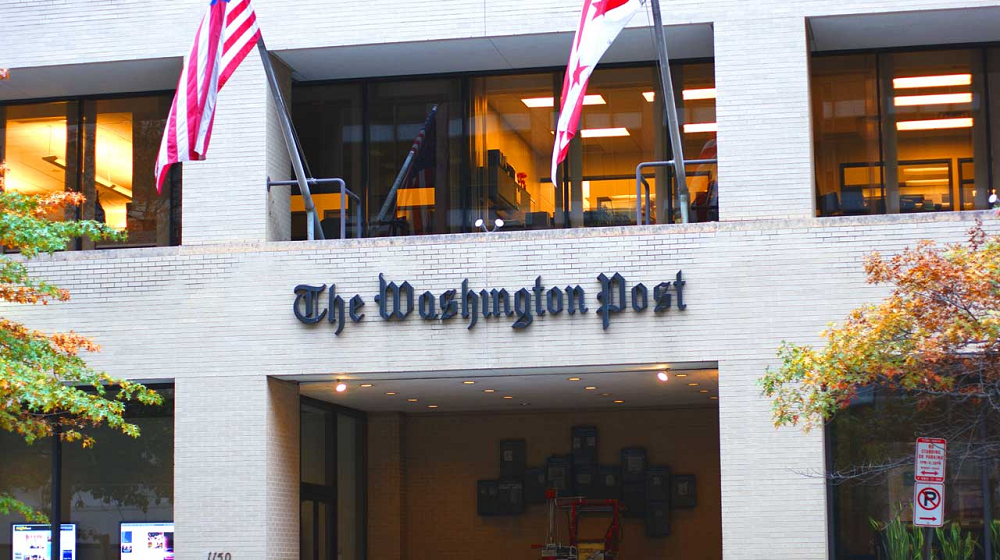VACCINE BOMBSHELL as U.N. health experts admit toxic vaccine ingredients are harming children worldwide – see video, transcript
01/25/2020 / By Mike Adams

A Dec. 2, 2019 World Health Organization “Global Vaccine Safety Summit” video has been found and leaked to the world, revealing shocking admissions of the health hazards posed by vaccines and their toxic ingredients.
A first-wave compilation of some of the more damning quotes was created by Del Bigtree’s “Highwire” organization, which posted the video to YouTube. Knowing that video would quickly be banned, we posted it to Brighteon.com, where “Highwire” is expected to launch a channel very soon.
You can watch the full video at this link on Brighteon. For a related article that covers this, see this link at TheHighWire.com.
A full transcript of this video compilation is offered below. Watch the video here, via Brighteon:
Some of the highlights:
An admission that vaccine adjuvants increase cell death and damage to vaccine recipients. For this paragraph, the term “reactogenicity” means vaccine adverse reactions and side effects, including those that are known to be extremely harmful and cause long-term damage or even death:
Dr. Stephen Evans, Professor of Pharmacoepidemiology – It seems to me that adjuvants multiply the immunogenicity of the antigens that they are added to, and that is their intention. It seems to me they multiply the reactogenicity in many instances, and therefore it seems to me that it is not unexpected if they multiply the incidence of adverse reactions that are associated with the antigen…
Warnings about long-term effects from vaccine adjuvants:
Dr. Martin Howell Friede – You are correct. As we add adjuvants, especially some of the more recent adjuvants, such as the ASO1, saponin-derived adjuvants, we do see increased local reactogenicity… The major health concern which we are seeing are accusations of long term, long term effects.
An admission that the W.H.O. is panicking over the fact that many doctors and nurses are finally starting to question the safety and vaccines and are becoming aware of the coordinated cover-up of vaccine injuries:
Prof. Heidi Larson, PhD, Director of the Vaccine Confidence Project – We have a very wobbly health professional front line that is starting to question vaccines and the safety of vaccines. When the front line professionals are starting to question or they don’t feel like they have enough confidence about the safety to stand up to it to the person asking them the questions. I mean most medical school curriculums, even nursing curriculums, I mean in medical school you’re lucky if you have a half-day on vaccines. Never mind keeping up to date with all this.
Also from Prof. Heidi Larson, PhD – You can’t repurpose the same old science to make it sound better if you don’t have the science that’s relevant to the new problem. So we need much more investment in safety science.
An admission that vaccine clinical trials are insufficient and that vaccines are approved without adequate safety data. Also admits that vaccines damage children far more than they damage elderly adults:
Dr. Marion Gruber – Director, Office of Vaccines Research and Review Center for Biologics Evaluation and Research. FDA – And again as you mentioned pre-licensure clinical trials may not be powered enough. It’s also the subject population that you administer the adjuvant to because we’ve seen data presented to us where an adjuvant, a particular adjuvant added to a vaccine antigen did really nothing when administered to a certain population and usually the elderly, you know, compared to administering the same formulation to younger age strata.
A warning about the lack of vaccine safety monitoring systems around the world:
Dr. Soumya Swaminathan, M.D., Chief Scientist, W.H.O., Pediatrician – I think we cannot overemphasize the fact that we really don’t havevery good safety monitoring systems in many countries, and this adds to the miscommunication and the misapprehensions because we’re not able to give clear-cut answers when people ask questions about the deaths that have occurred due to a particular vaccine…
Here’s an admission that viral fragments don’t work as promised by immunization theory and that it’s the adjuvants which are responsible for the inflammatory response to vaccines. In other words, vaccine science as described by the vaccine establishment, is quackery:
Dr. Martin Howell Friede, Coordinator, Initiative for Vaccine Research, W.H.O. – Without adjuvants, we are not going to have the next generation of vaccines. And many of the vaccines that we do have, ranging from tetanus through to HPV require adjuvants in order for them to work. We do not add adjuvants to vaccines because we want to do so.
An admission that vaccine safety tracking systems don’t even exist and that efforts to build such systems are only just beginning:
Dr. Robert Chen, M.D. – Scientific Director, Brighton Collaboration – [W]e’re really only in the beginning of the era of large data sets where hopefully you could start to kind of harmonize the databases for multiple studies. And there’s actually an initiative underway… Helen there may want to comment on it to try to get more national vaccine safety database linked together so we could start to answer these types of questions that you just raised.
Full transcript of what’s on this video – there’s a lot more yet to come
CAUGHT ON CAMERA: W.H.O Scientists Question Safety Of Vaccines
Prof. Heidi Larson, PhD, Anthropologist, Director of the Vaccine Confidence Project
There’s a lot of safety science that’s needed, and without the good science, we can’t have good communication. Although I’m talking about all these other contextual issues, and communication issues it absolutely needs the science as the backbone. You can’t repurpose the same old science to make it sound better if you don’t have the science that’s relevant to the new problem. So we need much more investment in safety science.
Dr. Soumya Swaminathan, M.D., Chief Scientist, W.H.O., Pediatrician
I think we cannot overemphasize the fact that we really don’t have very good safety monitoring systems in many countries, and this adds to the miscommunication and the misapprehensions because we’re not able to give clear-cut answers when people ask questions about the deaths that have occurred due to a particular vaccine, and this always gets blown up in the media. One should be able to give a very factual account of what exactly has happened and what the cause of the deaths are, but in most cases there is some obfuscation at that level and therefore, there’s less and less trust then in the system.
Dr. Martin Howell Friede, Coordinator, Initiative for Vaccine Research, W.H.O.
Every time that there is an association, be it temporal or not temporal, the first accusation is it is the adjuvant. And yet, without adjuvants, we are not going to have the next generation of vaccines. And many of the vaccines that we do have, ranging from tetanus through to HPV require adjuvants in order for them to work. So the challenge that we have in front of us is: How do we build confidence in this? And the confidence first of all comes from the regulatory agencies (I look to Marion). When we add an adjuvant it’s because it is essential. We do not add adjuvants to vaccines because we want to do so. But when we add them, it adds to the complexity. I give courses every year on “How do you develop vaccines?”, “How do you make vaccines?” And the first lesson is, while you’re making your vaccine, if you can avoid using an adjuvant, please do so. Lesson two is, if you’re going to use an adjuvant, use one that has a history of safety. And lesson three is, if you’re not going to do that, think very carefully.
Dr. Stephen Evans, Professor of Pharmacoepidemiology
It seems to me that adjuvants multiply the immunogenicity of the antigens that they are added to, and that is their intention. It seems to me they multiply the reactogenicity in many instances, and therefore it seems to me that it is not unexpected if they multiply the incidence of adverse reactions that are associated with the antigen, but may not have been detected through lack of statistical power in the original studies.
Dr. Martin Howell Friede
You are correct. As we add adjuvants, especially some of the more recent adjuvants, such as the ASO1, saponin-derived adjuvants , we do see increased local reactogenicity. The primary concern, though, usually is systemic adverse events rather than local adverse events. And we tend to get in the Phase II and the Phase III studies quite good data on the local reactogenicity. Those of us in this room that are beyond the age of 50 who have had the pleasure of having the recent shingles vaccine, will know that this does have quite significant local reactogenicity. If you got the vaccine, you know that you got the vaccine. But this is not the major health concern. The major health concern which we are seeing are accusations of long term, long term effects. So to come back to this, I’m going to once again point to the regulators. It comes down to ensuring that we conduct Phase II and the Phase III studies with adequate size and with the appropriate measurement.
Dr. David Kaslow, M.D. – V.P., Essential Medicines, Drug Development program PATH Center for Vaccine Innovation and Access (CVIA)
So in our clinical trials, we are actually using relatively small sample sizes, and when we do that we’re at risk of tyranny of small numbers, which is, you just need a single case of Wegener’s Granulomatosis, and your vaccine has to, solve Walt’s, How do you prove a null Hypothesis? …And it takes years and years to try to figure that out. It’s a real conundrum, right? Getting the right size, dealing with the tyranny of small numbers, making sure that you can really do it. And so I think one of the things that we really need to invest in are kind of better biomarkers, better mechanistic understanding of how these things work so we can better understand adverse events as they come up.
Dr. Marion Gruber – Director, Office of Vaccines Research and Review Center for Biologics Evaluation and Research. FDA
One of the additional issues that complicates safety evaluation is that if you look at, and you struggle with the length of follow-up that should be adequate in a, let’s say a pre-licensure or even post-marketing study if that’s even possible. And again as you mentioned pre-licensure clinical trials may not be powered enough. It’s also the subject population that you administer the adjuvant to because we’ve seen data presented to us where an adjuvant, a particular adjuvant added to a vaccine antigen did really nothing when administered to a certain population and usually the elderly, you know, compared to administering the same formulation to younger age strata. So these are things which need to be considered as well and further complicate safety and effectiveness evaluation of adjuvants combined with vaccine antigens.
Dr. Bassey Okposen – Program Manager, National Emergency Routine Immunization Coordination Centre (NERICC). Abuja, Nigeria
I cast back my mind to our situation in Nigeria where at six weeks, ten weeks, fourteen weeks, a child is being given different antigens from different companies, and these vaccines have different adjuvants and different preservatives and so on. Something crosses my mind… is there possibility of these adjuvants, preservatives, cross-reacting amongst themselves? Have there ever been a study on the possibility of cross-reactions on from the past that you can share the experience with us?
Dr. Robert Chen, M.D. – Scientific Director, Brighton Collaboration
Now the only way to tease that out is if you have a large population database like the vaccine safety datalink as well as some of the other national databases that are coming to being worthy. Actual vaccine exposure is trapped down to that level of specificity of who is the manufacturer? What is the lot number? Etc..etc. And there’s an initiative to try to make the vaccine label information bar-coded so that it includes that level of information. So that in the future when we do these type of studies, we are able to tease that out. And in order to be – each time you subdivide them, the sample size gets becoming more and more challenging and that’s what I said earlier today about that we’re really only in the beginning of the era of large data sets where hopefully you could start to kind of harmonize the databases for multiple studies. And there’s actually an initiative underway… Helen there may want to comment on it to try to get more national vaccine safety database linked together so we could start to answer these types of questions that you just raised.
Prof. Heidi Larson, PhD
The other thing that’s a trend and an issue is not just confidence in providers but confidence of health care providers. We have a very wobbly health professional front line that is starting to question vaccines and the safety of vaccines. When the front line professionals are starting to question or they don’t feel like they have enough confidence about the safety to stand up to it to the person asking them the questions. I mean most medical school curriculums, even nursing curriculums, I mean in medical school you’re lucky if you have a half-day on vaccines. Never mind keeping up to date with all this.
Watch the full video at Brighteon.com.
Tagged Under: doctors, flu shot, health freedom, Immunizations, infectious disease, Medical Tyranny, outbreak, pandemic, propaganda, vaccine dangerous, Vaccine injuries, vaccine jihad, vaccine safety, vaccines, WHO
RECENT NEWS & ARTICLES
COPYRIGHT © 2017 MEDIA FACT WATCH



















